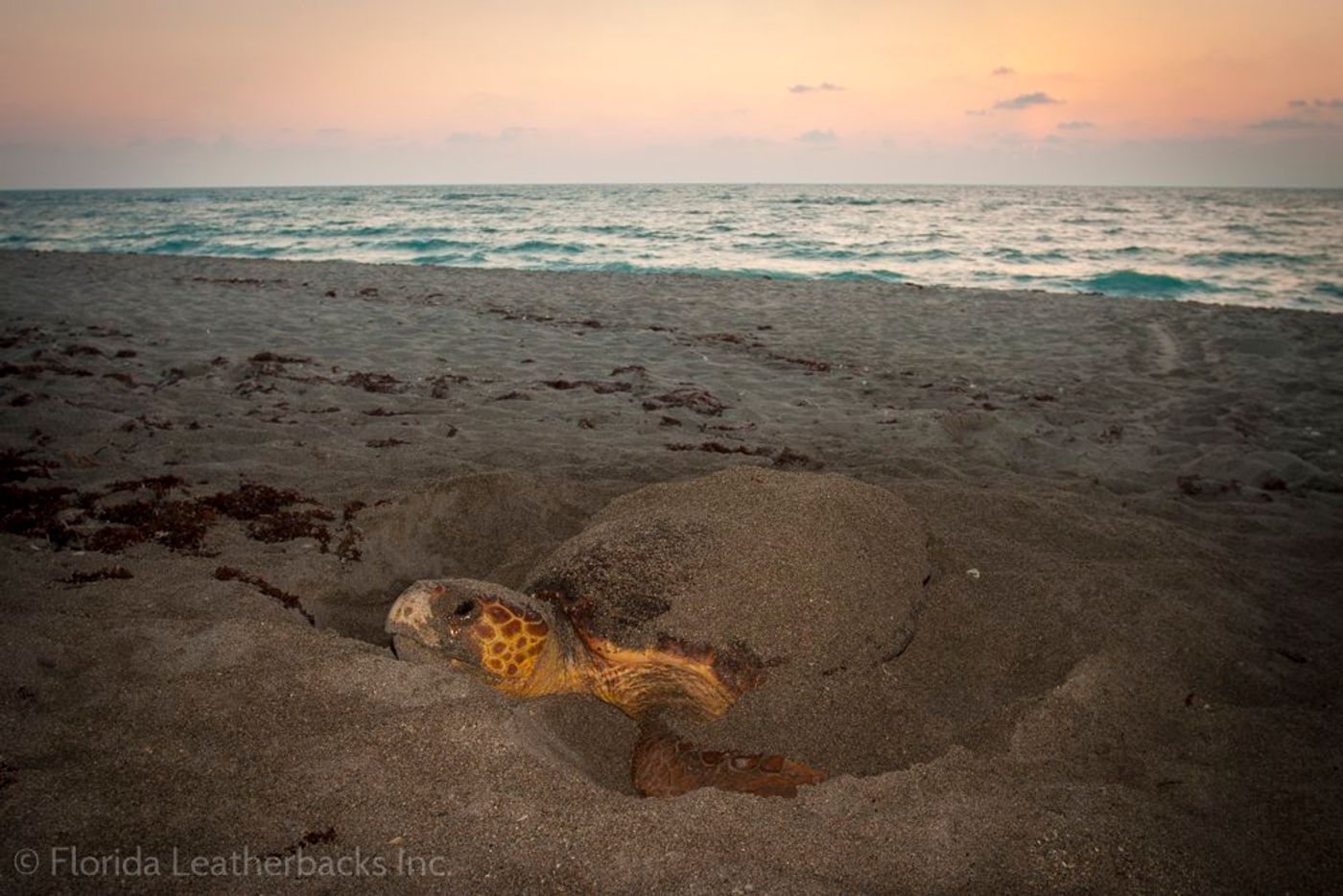Luck Enabled Scientists to Monitor a Leatherback Sea Turtle Throughout Hurricane Florence
If you’re a sea turtle, and a hurricane is headed right for your turf, what do you do?
Scientists can loosely answer this question thanks to years’ worth of studies involving animal behavior during violent storms, but much of their behavioral mechanisms during these times of high stress remain poorly understood.
Image Credit: Florida Leatherbacks, Inc.
Nevertheless, a team of scientists with the organization Florida Leatherbacks, Inc. enjoyed a front-row seat to this sort of data in real-time after a leatherback sea turtle they’d tagged in May happened into the path of hurricane Florence. The team named the animal Isla.
As reported by Popular Science, Isla rode out the storm while it slammed into the East coast near the end of last week. She’s alive and well today, hanging out along the coast of North Carolina, but that’s not to say she didn’t experience a rough patch of weather along the way.
Related: A beach chair killed this endangered sea turtle
The scientists indicate that Isla spent much of her time below the ocean’s surface, perhaps in an effort to stay far away from the dangers above.
“Turtles are air breathers, so they need to come to the surface periodically to breathe, but I suspect many dive below the surface to weather the storms,” organization director Kate Mansfield told Popular Science.
“I have tracked turtles through some storms in the past and never saw any sort of movement that suggested they were trying to get away from the storm (or that the storms shifted their paths). The turtles I tracked were larger juveniles—at that size, they can dive 100s of meters deep.”
Related: Sea turtles' flippers aren't just for swimming...
Keeping up with the violent currents and waves imposed by the storm meant that Isla had to be a more active swimmer than usual, and given how she would’ve needed to visit the surface to breathe, this also meant fighting the currents to grab some air in between deep dives.
As it would seem, similar data involving other marine animals follow comparable trends. It’s clear that many wild animals prefer the smooth movements of the ocean to the violent winds at the surface during massive storms like hurricane Florence, but the scarcity of scientific data in this department makes it challenging to draw certain conclusions.
It should be interesting to see what else the scientists learn as they continue monitoring Isla’s behavior and movements.
Source: Popular Science via Florida Leatherbacks, Inc. (Twitter)









